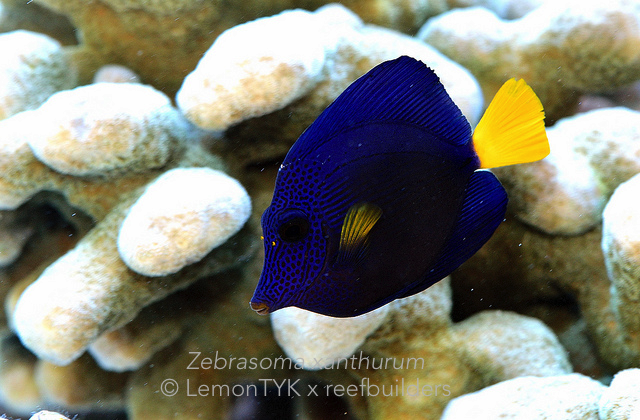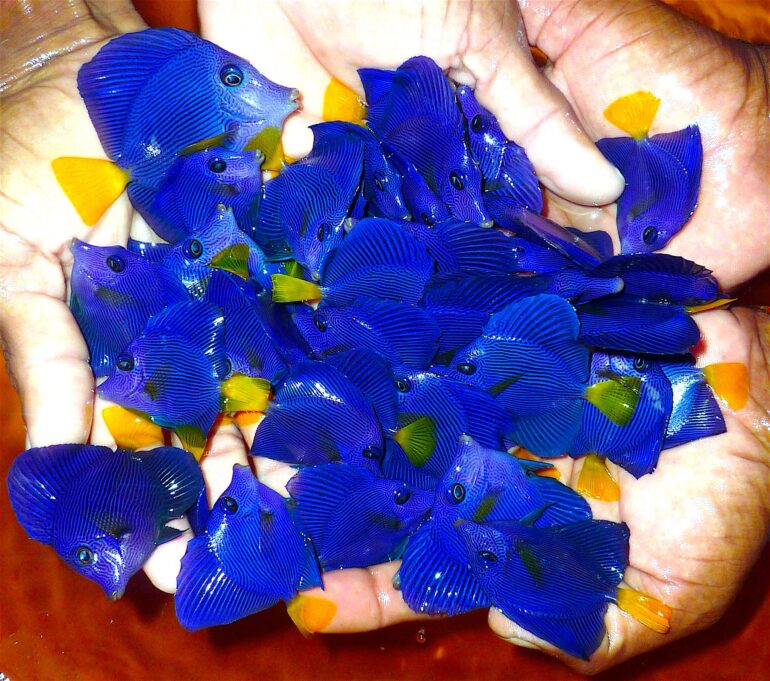Aquamarines in Sri Lanka was the procurer of the wildly scribbled Koran angelfish, and they will soon be the source of tank raised purple tangs. Before you go getting all excited about another surgeonfish captive breeding breakthrough, realize that although these fish have been in captivity for most of their lives, know that they were born in the wild.
Through Aquamarine’s own collecting station in the Red Sea, they noticed a spike in newly settled Zebrasoma xanthurum during certain parts of the year. These 1cm long baby purple tangs are way too small to be exported and sold in stores, but after a few short months they are a sellable size of around 4 to 5 cm, or about two inches.

The problem is that if left in the wild, the survival rate of these 1cm to 5cm tangs is about 40% by Aquamarines’ estimates. Their observations indicate that for 100 tiny purple tangs sighted in a given section of the reef, a few months later only about 30 to 40 are left.
So Aquamarines decided to take the rearing process of these newly settled purple tangs into their own hands, and grow them in their own holding ponds. In this manner the newly minted purple tangs not only have much higher survival rates, but by the time they are of sellable size they are fully quarantined and conditioned to life in n aquarium environment.
Red Sea purple tangs are notorious for being particularly belligerent in home aquariums, so perhaps growing up in close quarters with plenty of their kind might also suppress some of their aggressive behavior. These tank raised purple tangs may be a little more expensive initially, but should be a better value and a better fish due to reduced problems with diseases, and might even be cheaper for dealers to handle since they might be a little more docile.
Captive breeding efforts are important for safeguarding marine fish species in the wild and in captivity, but raising tiny surgeonfish from the time they settle out on the reef is also a more sustainable harvesting method than simply collecting wild fish. [Aquamarines]



